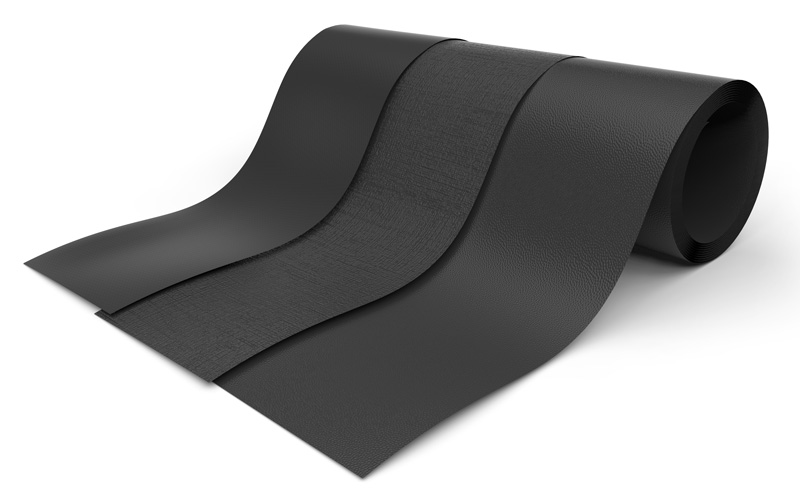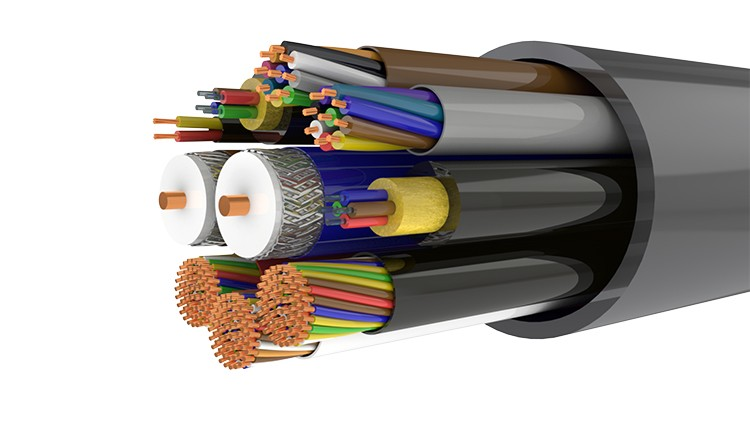What is TPE Rubber?
TPE stands for Thermoplastics Elastomer material. The industry also refers to it as thermoplastic rubber. It has several similar characteristics to thermoplastics. Hence, it is widely used for a variety of applications. Moreover, TPE becomes free-flowing when heated. Contrarily, the material regains its original shape upon cooling down.

Additionally, TPE is easily recyclable and reusable. Hence, production waste never really goes to waste. On top of it, TPE makes extruding and injection molding pretty easy, thanks to its soft nature. Also, TPE has some pretty typical applications around our everyday use appliances. These include automotive components, home appliances, wires, cables, etc.
What are the Different Types of TPE?
Yes, thermoplastic elastomer material products have several different types of TPE compounds. Have you ever come across terms such as TPUs or TPV? Both stand for (Thermoplastic PolyUrethane) and (Thermo-Plastic Vulcanizates). People often confuse both these terms with TPE.

They both sound pretty similar to thermoplastic elastomers for a reason. In reality, both TPU and TPV are TPE compounds. These are the two most commonly used TPEs globally. Moreover, there are also bio-based thermoplastic elastomers and thermoplastic rubber.
But how do we get these different types of TPE? Well, it often happens that customers want different properties of thermoplastic elastomers. When that happens, the best way to achieve this involves blending TPE with other materials.
The result leads to the conversion of raw thermoplastic elastomer into TPVs or TPUs. Sometimes, manufacturers go out of their way to produce a specific recipe that has never been produced before. All of this allows us to attain properties suitable for client needs.
Send Your Inquiry Now!
Quality Meets Affordability. Inquire Now for High-Quality Products at Low Volumes.
TPE Rubber Properties
The thermoplastic elastomer has fundamental thermoplastic and elastomeric properties. These essential properties allow you to differentiate between TPE and regular rubber products. For instance, the shore scale for TPE comes at 20 Shore OO to 90 Shore A. This is relatively softer than many other materials, such as silicone rubber.
On top of that, thermoplastic elastomer does not cost much to produce. Hence, manufacturers invest a lot in this cost-saving material. But how? Well, the TPE manufacturing process is pretty easy and convenient.
Another great thing about thermoplastic elastomer includes the time it takes to produce. To understand this, let’s first understand how conventional rubber is molded.
All thermoset rubbers have to go through a chemical cross-linking reaction. The process is vital for molding, and the most common technique used today is vulcanization.
However, the vulcanization process can take several minutes to a few hours to complete. This depends on various factors, including the material leading to vulcanized rubber.
Nevertheless, in the case of TPE, it only takes as long as 30 seconds for the cross-linking process to complete. Hence, manufacturers find it convenient to produce the product.
TPE: Prominent Elastomeric Properties

- Thermoplastic elastomers can be re-processed and recycled. This minimizes waste and scarp. Moreover, TPEs that have no use usually end up in landfills, making them eco-friendly.
- TPE material has good colorability. Hence, manufacturers find it easy to process and give it any color the customer demands.
- Thermoplastic elastomers also perform exceptionally well against wear and tear. Hence, reasonable wear and tear resistance allows for multiple industry applications.
- Thermoplastic elastomers also withstand pressure excellently. This means you can apply pressure to it, and it will flex to withstand it. However, when you release the pressure, TPE quickly regains its original shape.
- Thermoplastic elastomers also have chemical resistance against various materials, including alcohols, dilute alkalis, oil resistance, greases, hydrocarbons (aliphatic and aromatic), etc. TPE also performs well in harsh weather conditions.
- Thermoplastic elastomers also have average electrical properties. Hence, it does not allow an electric current to pass through to a great extent.
- Also, the low specific gravity of Thermoplastic elastomers allows for more square inches of material per pound. Hence, manufacturers can produce more with less raw material.
What is TPE Rubber Used for?
Now, coming to the applications of Thermoplastic elastomers rubber. We have compiled a comprehensive table for you to go through:
| Industry | Applications | Feature |
| Electronics | Wires, cables, condenser sheaths, components for mobile phones, sockets & plugs, etc. | Excellent moldability and electrical properties |
| Industrial | Drums, shock absorbers, mounts for anti-vibration, roof membranes, suspension bushes, seals, inlet pipes, etc. | Excellent chemical resistance and high flexibility |
| Footwear | Masks, ski boots, soles for shoes, flippers, snorkels, handles for ski poles, etc. | Reasonable wear and tear resistance |
| Consumer Goods | Appliance magnetic seals, protection covers for electronics, push button panels, covers for mobile phones, remote control covers, etc. | Good moldability and flexibility |
| Health Care and Medical | Breathing tubes, valves, seals, bags, ventilation masks, syringe seals, etc. | Lightweight, chemical resistance, and flexibility |
| Automotive | Weather seals, bumpers, pressure pipes, drive belts, grommets for pipes, trims (exterior and interior), dust boots for shocks, air ducts, mats, instrument panels, glass encapsulation, etc. | Abrasion resistance and flexibility |
Send Your Inquiry Now!
Quality Meets Affordability. Inquire Now for High-Quality Products at Low Volumes.
TPE Rubber Benefits and Advantages
Thermoplastic elastomer comes with a variety of benefits and advantages. Let’s take a look at the list below:

- Thermoplastic elastomers offer the TPE processing prowess of plastics while they look and flex like thermoset rubbers. The combination makes it suitable for more applications and opens its way in diversified industries.
- TPE materials have compatibility with most dyes. Hence, it is one of the most accessible materials to color. This allows for a variety of variations.
- TPE materials have high consistency. What does this mean? TPE does not require any little or no compounding, curing agent, or reinforcing agent to improve it. It is consistent both in its raw form and final form. Hence, you won’t find any differences among batches of TPE.
- TPE material has high elasticity. As a result, this allows for better elongation and a more comprehensive range of compression sets and durometers.
- TPE material is excellent for bulk production. It has easy TPE processing conditions that allow for extrusion and injection molding. On top of it, the material’s recyclability allows for minimum waste leading to optimum outcomes.
- TPE does not cost much. Hence, the material offers a great alternative to the more expensive options, including latex, PVC, silicone, etc.
- TPE has exceptional thermal properties. Hence, it can withstand higher temperatures. On top of that, the material also performs well in varying environmental conditions.
- TPE promotes a healthier environment in two ways. First, the recyclability, as we have discussed. Secondly, TPE requires minimal energy for production. Hence, this also adds to a less negative impact on the environment.
TPE Rubber Drawbacks and Disadvantages

TPE is undoubtedly one of the best rubber materials out there. However, all rubber materials, including TPE, have one or some drawbacks. For TPE, these include:
- TPE might require you to dry the raw material before the whole process occurs.
- TPE has a soft nature. However, this soft elastomer is further enhanced under higher temperature conditions.
- TPE does not provide the suitable characteristics to produce low-hardness products.
TPE Rubber: FAQs
Is TPE a safe material?
Yes, TPE is a safe material. TPE is also categorized as a safe material for kids. Thus, you have nothing to worry about, even if your kids get their hands on any TPE products.
Is TPE better than Latex?
The answer to this depends on the application in question. If the application requires more plastic-like properties, then TPE is the better option.
However, Latex will perform better in applications where its properties are required. As a result, it all comes down to the requirements. However, typically, TPE has more applications than latex.
TPE vs. PVC, which is better?
Both PVC and TPE have very similar properties. For instance, they both have high strength and great flexibility. Hence, you can use them for a variety of applications.
However, one area where TPR exceeds PVC is oil resistance and grease resistance. This also extends to diluted alkalis and acids.
Is TPE FDA-compliant?
TPE can be used for FDA applications. However, you would have to request the manufacturer for the specific type of TPE that the FDA approves.
It’s not an issue if the manufacturer knows what they are doing. FDA has approved specific grades of TPE, which you can also look for online.
Send Your Inquiry Now!
Quality Meets Affordability. Inquire Now for High-Quality Products at Low Volumes.
Conclusion
To conclude, TPE is a highly diverse material with many applications. On top of that, the flexibility and chemical resistance make it a popular material in a wide range of industries. Hence, manufacturers find it a pleasure to produce this product because of the easy process and the minimum amount of time required.
Hongju Provides TPE Rubber for you!
Hongju is at your service with the best-in-class rubber products. If you are interested in TPE rubber grommets, gaskets, and other parts, we have thoughtful design and manufacturing teams that can cater to your needs. At Hongju, we use premium raw materials and the most advanced technology to offer the best to our customers. Learn more about us and call us now.